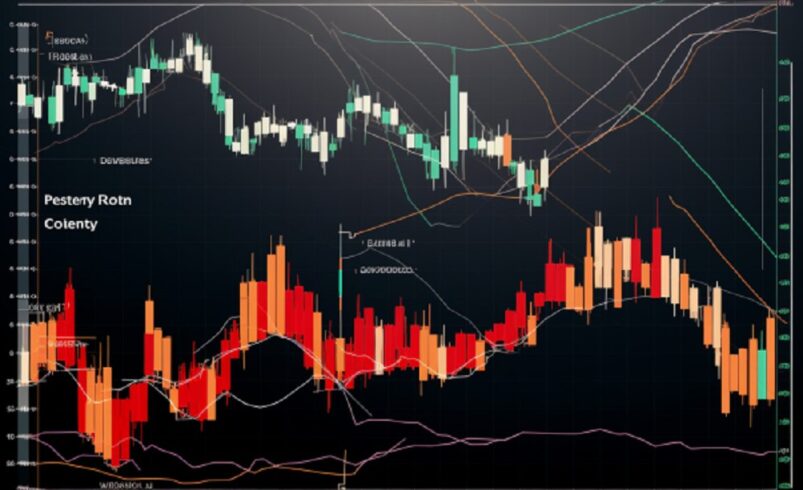A Crypto Market Crash Or Correction: What’s The Difference?

Table of Contents
Cryptocurrency markets are known for their exhilarating highs and heart-wrenching lows. Understanding the difference between a crash and a correction is akin to navigating the stormy seas of this digital financial frontier.
This comprehensive guide discusses the differences between crypto crashes and corrections, unveiling the technical cues and underlying factors that drive these market phenomena.
Overview Of A Crypto Market Crash
A crypto crash is a sudden, significant drop in cryptocurrency prices, typically exceeding 10% within a single day. Panic-driven mass sell-offs characterize these events due to impactful and abrupt changes in the crypto market.
Technical analysis plays a crucial role in identifying crashes. Analysts often turn to moving averages on charts to discern potential crashes. For instance, on September 4, 2017, Bitcoin showed signs of a downturn, with trading volume spiking and the price dipping below the 50-day moving average.
This day, often referred to as “Red Monday,” recorded a significant drop in prices of crypto assets. Ethereum experienced a similar trend leading up to its crash on June 22, 2018, closing below the 50-day moving average multiple times.
Those declines in the value of Bitcoin and Ethereum were indicative of a broader market correction during that period. However, it’s crucial to recognize that while technical factors can provide a huge clue in the price drops of these major cryptocurrencies, large crashes are often the result of fundamental circumstances. These can include macroeconomic events, significant company announcements, and sudden shifts in international regulations and policies.
Overview Of Crypto Market Correction
A crypto correction, in contrast to a crash, is characterized by a gradual decline in prices, extending over several days. Corrections signify a period where bullish traders, who were previously driving prices higher, have become fatigued and need time to regroup.
It occurs when the majority of potential buyers have already entered the market, and there are no new buyers to sustain the upward trend. Consequently, if the sell orders continue without corresponding buy orders, prices begin to fall.
During the bullish surge from September 2017 to January 2018, there were two distinct corrections. It’s worth highlighting that in both cases, the price never breached the 50-day moving average.
Technical factors primarily influence corrections. Such factors include buyers encountering robust resistance levels, dwindling trading volume, and discrepancies between Bitcoin’s price and indicators that measure its momentum, such as the relative strength index (RSI).
Technical Indicators In Crashes And Corrections
During crypto crashes and corrections, technical indicators play a pivotal role in providing insights into market behavior. In the context of a crash, technical analysts closely monitor specific indicators to anticipate or confirm the occurrence of a significant downturn.
One of the key metrics is the moving average, particularly the 50-day and 200-day moving averages. When an asset’s price closes below these averages and is accompanied by a surge in selling volume, it raises a red flag. This combination often signals an impending crash.
Conversely, in corrections, technical indicators offer insights into the gradual decline of prices. While the decline may be less abrupt than in crashes, these indicators are equally valuable in enabling an understanding of market dynamics.
One of the primary indicators is the 50-day moving average. In a correction, prices don’t usually dip below this average, indicating a slowing trend.
However, the key distinction is that corrections do not typically close below this moving average. It indicates that the decline is part of a broader corrective phase rather than a crash.
Fundamental Drivers Of Crashes
While technical indicators are crucial, it’s equally important to recognize the fundamental factors that can result in a crash in the crypto market.
Macroeconomic Events
One significant driver is macroeconomic events such as changes in interest rates, inflation, or economic growth. For instance, a sudden change in monetary policy by a central bank can have a profound impact on the crypto market, potentially leading to a crash.
Major Company Announcements
Announcements from major companies within the crypto space or related industries can also trigger significant market movements. This could include announcements about new technologies, partnerships, or regulatory compliance. Depending on the nature and perceived impact of such announcements, they can lead to rapid market reactions.
Regulatory Policy Changes
Sudden changes in international regulations and policies regarding cryptocurrencies can have a substantial impact on market sentiment. This factor was evident in the largest crash in Bitcoin’s history in April 2013, following regulatory actions by the US Financial Crimes Enforcement Network (FinCEN).
Ultimately, a clear understanding of crypto crashes and corrections, along with strategic approaches to navigate them, empowers investors to make more informed decisions in the dynamic world of cryptocurrency trading.
Time Crypto Market offers content visibility for dozens of crypto enterprises, and you can be a part of our network! Reach out to us on our telegram chat for inquiries. The nature of cryptocurrencies is highly unpredictable; always perform your due diligence before any investment. Several articles on our site come from guest contributors or are commissioned pieces, not originating from Time Crypto Market's in-house writers. The perspectives shared in these articles might not necessarily align with those of Time Crypto Market. We do not assume responsibility for the veracity, caliber, promotions, offerings, or any other elements presented on our platform. Consult our comprehensive terms of service and disclaimer for more details.








